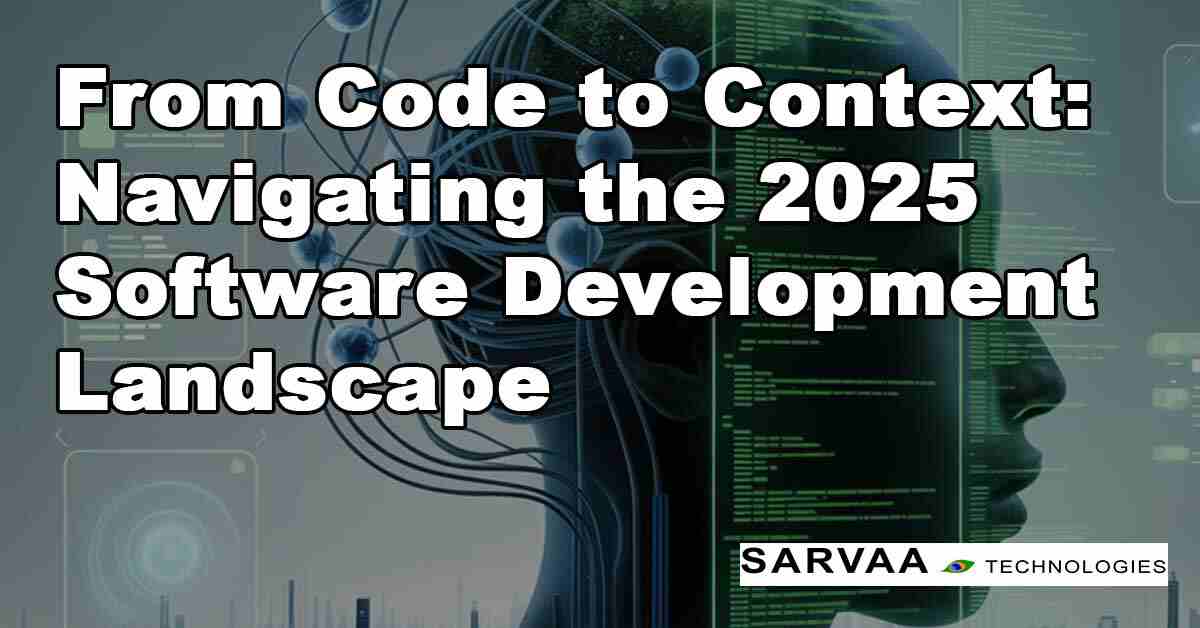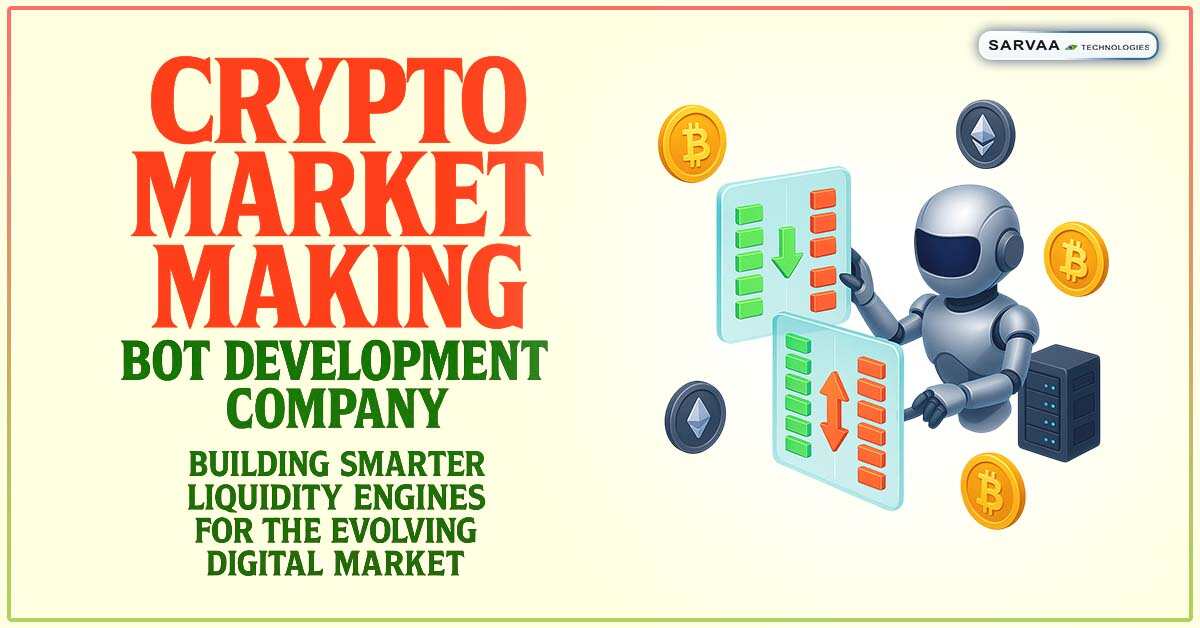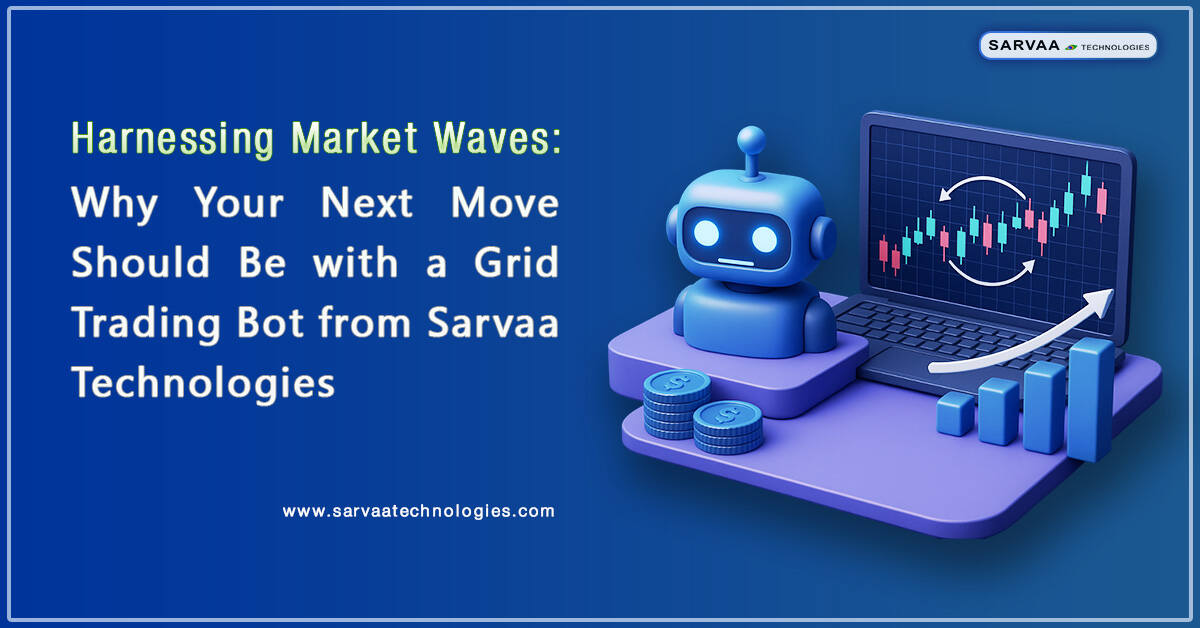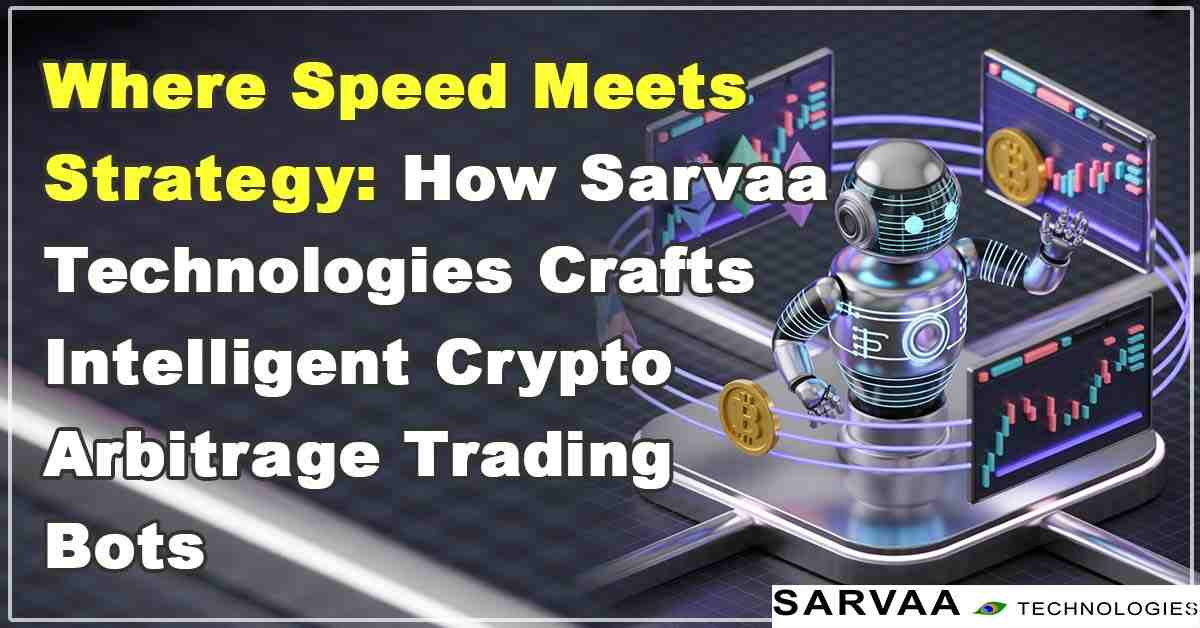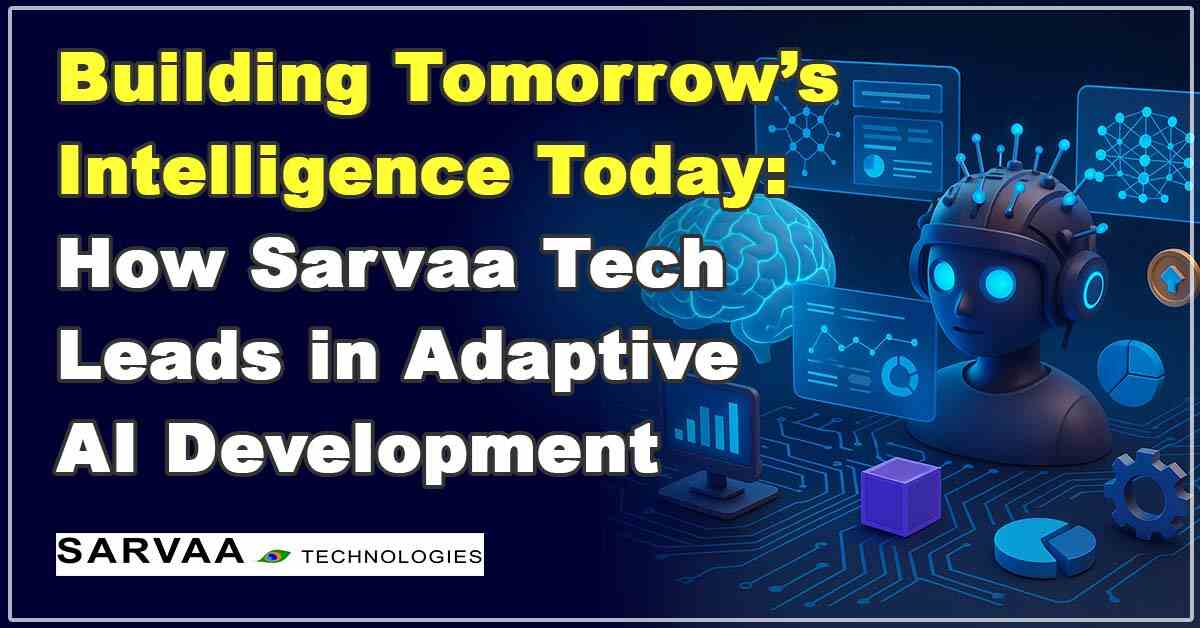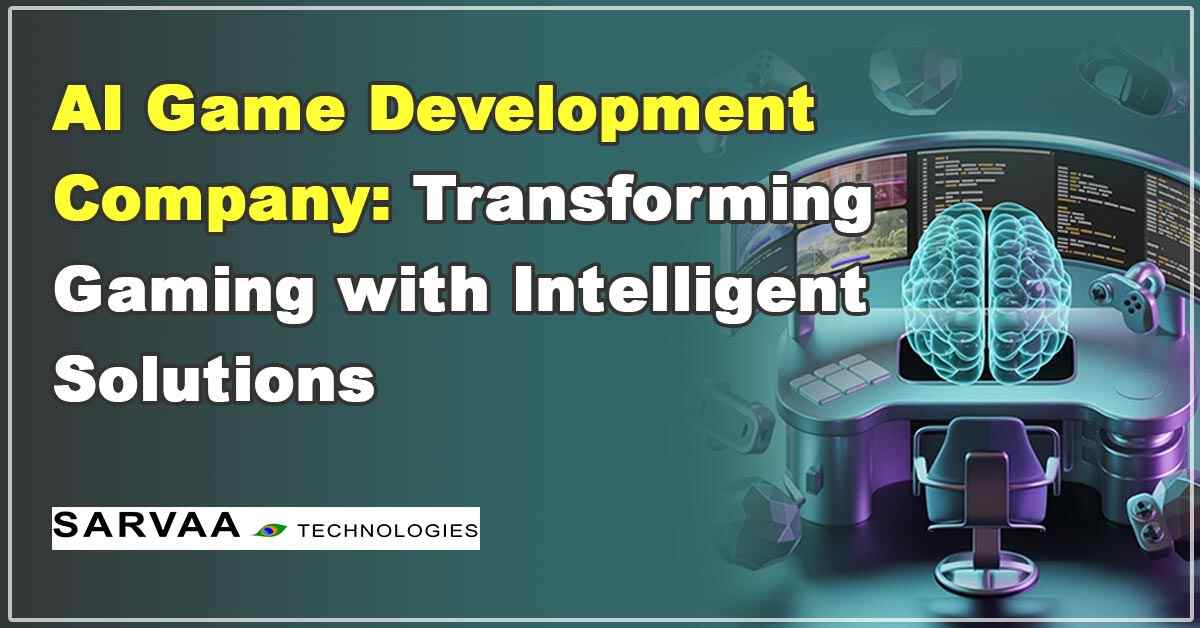In a world where software is not only about what it does but how and why it does it, companies and developers need to rethink software development. The 2025 software development environment is being shaped by dramatic technology changes and evolving user expectations as well as by the need for sustainable, scalable solutions.
Those days are over when clean code was sufficient. Now, success relies on understanding the context in which software runs—user behavior, business goals, ethical issues, and even environmental issues. In this blog, we're going to delve into the new trends, challenges, and tactics defining software development in 2025.
I. Code Alone Is Not Enough: The Contextual Shift
In the past, winning in software development was typically a matter of functionality and efficiency. While these are still imperative, context—the environment, user intent, purpose, and life cycle of the software—has become an equally vital pillar.
The context-minded approach addresses questions such as:
- Is this software addressing the actual user pain point?
- Is it built to grow with the business?
- Does it meet international privacy regulations?
- Can it be supported and extended by future teams?
- What is its carbon footprint?
Developers, more than ever before, need to collaborate outside technical teams—to product managers, users, data scientists, and compliance officers.
II. The 2025 Trends You Can't Ignore
1. AI-Augmented Development
AI has transitioned from a backroom test to a frontline coding buddy. Thanks to tools such as GitHub Copilot, Amazon CodeWhisperer, and ChatGPT in IDEs, developers can:
- Auto-generate boilerplate code
- Spot bugs and propose fixes in real time
- Refactor code for performance or readability
- Learn new frameworks through natural language prompts
More importantly, AI enables developers to spend less time on code creation and more on strategic problem-solving. The winners of 2025 aren't just coding faster—they're thinking smarter.
2. Low-Code/No-Code Platforms
Low-code/no-code (LCNC) platforms are revolutionizing the way technical and business stakeholders interact. Business teams are now able to create MVPs and dashboards on their own with platforms such as OutSystems, Mendix, and Microsoft Power Apps.
This translates to developers as:
- Shorter prototyping cycles
- Less stress for simple automation tasks
- More time to spend on intricate integrations and backend coding
Hybrid teams consisting of developers and business users are now standard in large organizations.
3. Green Software Engineering
As cloud computing's carbon footprint has come into question, "green" coding has taken center stage. This entails:
- Coding energy-efficient algorithms
- Eliminating redundant computation
- Employing sustainable hosting options
- Optimizing data transfer and storage
New plugins and tools, such as Green Software Foundation's Carbon Aware SDK, assist in calculating the carbon footprint of software programs. Sustainability has evolved from a CSR activity to a competitive advantage.
4. Context-Aware Applications
Software in 2025 doesn't react—It predicts and adapts. Context-aware apps leverage real-time data from devices, environment, and user behavior to provide dynamic experiences.
Examples:
- A fitness app that adapts goals on the basis of health data and weather
- E-commerce apps that adapt UI on the basis of user mood inferred through voice tone
- Smart city dashboards that respond to sensor data for traffic and pollution
In order to construct such solutions, developers must integrate with APIs, IoT sensors, and real-time analytics streams—demanding a firm handle on data flow, privacy, and compliance.
5. Cybersecurity by Design
With software increasingly open to international users and services, secure code development from day one is no longer a choice. DevSecOps—baking security scans into the CI/CD pipeline—is now a standard requirement.
New areas in 2025:
- AI-powered threat detection in code repositories
- Privacy-computation (PEC) for GDPR, HIPAA, etc. compliance
- Zero-trust architectures go mainstream
Security is no longer an afterthought—it's embedded in every commit.
III. Rethinking the Development Process
1. User-Centric Requirements Gathering
Static requirement documents are giving way to dynamic user flows and design sprints.
Today's dev teams depend on:
- Heatmaps and behavioral analytics
- Clickstream analysis
- Real-time user feedback loops
This requires developers to be familiar with user psychology, conversion metrics, and product-market fit—not APIs and modules.
2. Modular and Microservice Architectures
Applications are becoming ever more modular, employing microservices and containerized components. This offers:
- Faster deployments
- Easier debugging and scaling
- Better fault isolation
Paired with orchestration tools such as Kubernetes, this modularity is critical for real-time, always-on applications serving global users.
3. Collaborative, Cross-Functional Teams
The most successful teams in 2025 aren't just coders—they're solution engineers. Cross-functional teamwork among design, business, compliance, and QA guarantees that software is:
- Visually accessible
- Functionally robust
- Legally compliant
- Emotionally engaging
Contemporary dev environments foster shared ownership, not merely ticket closure.
IV. Familiar Challenges and Real-World Solutions
Challenge 1: Volatility of Requirements
Solution: Embrace agile + continuous feedback patterns. Employ tools such as Jira, Figma, and Hotjar for monitoring and reacting to changing user requirements.
Challenge 2: Scaling in Crisis
Solution: Architect with scalability in mind employing cloud-native designs, horizontal scaling methodologies, and autoscaling groups on AWS/GCP/Azure.
Challenge 3: Technical Debt Creep
Solution: Schedule tech-debt sprints on a regular basis. Utilize SonarQube or CodeClimate to detect and resolve maintainability problems ahead of time.
Challenge 4: Tool Overload
Solution: Streamline your toolchain. Select platforms with seamless integration with one another. Place developer experience (DX) at the forefront of tooling choices.
V. What This Means for Your Business
No matter if you're creating a customer portal, an AI-driven dashboard, or a cross-platform mobile application, the context-first methodology is now a necessity. Clients no longer request "an app"—they need a solution that learns, grows, and provides long-term value.
This implies that software development is no longer a service—it's a strategic collaboration.
In order to succeed in 2025, organizations need to:
- Embracing agility and experimentation
- Invest in upskilling tech teams in design, ethics, and systems thinking
- Measure success by impact, not just output
VI. Ethical Coding and the Human Effects of Software
With software increasingly integrated into all areas of our lives—ranging from hiring tools and medical diagnosis to learning and social media—its ethical effects are no longer theoretical. Today's programmers are no longer creating features; they're structuring behavior, making decisions, and even controlling access to opportunity.
In 2025, ethical software design is an essential duty. Some important factors to consider are:
- Bias in AI: Algorithms learned from imbalanced training data can inadvertently perpetuate social biases. The developers need to check for and address bias at every step—from data acquisition to deployment.
- Digital Inclusion: Is your application accessible to disabled users? Does it function in low-bandwidth situations? Inclusive design is now an ethical and generally a legal requirement.
- Transparency and Explainability: As black-box models gain traction in AI, users and regulators call for transparency. Developers must create explainable systems, particularly in domains such as finance, health, and government.
- Data Privacy and Consent: User sovereignty of data is picking up pace. Capabilities such as fine-grained permissions, data minimization, and ethical analytics are becoming the norm.
- Sustainable Development Goals (SDGs): Increasingly, organizations are mapping their software objectives with SDGs, highlighting environmental sustainability, gender equality, and access to education.
Ethical coding is not merely about compliance checkmarks—it's about human-centered software development that honors diversity, safety, and sustainability.
By adopting these principles, developers shift from the mere "builders of functionality" to digital experience custodians. This heightened sense of responsibility creates long-term trust with users and makes the products we build today not the problems of the future.
Conclusion: Writing the Future of Software
The transition from "just code" to "code with context" is not only a trend—it's a requirement. As technologies intersect and user expectations change, the most successful developers and companies will be those that know the why as much as they know the how.
Software is no longer merely a tool—it's an experience, a statement, and a responsibility.
If you're entering the world of software in 2025, don't just bring your IDE. Bring your curiosity, your empathy, and your desire to develop with context.
Ready to create software that adjusts, grows, and actually fulfills its function?
Experience the power of contextual, future-proof development to turn your idea into impact—connect with sarvaatechnologies.com –- contact our team and let's start building smarter.
